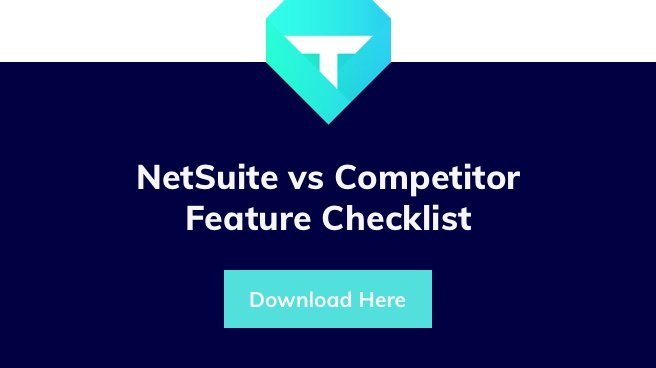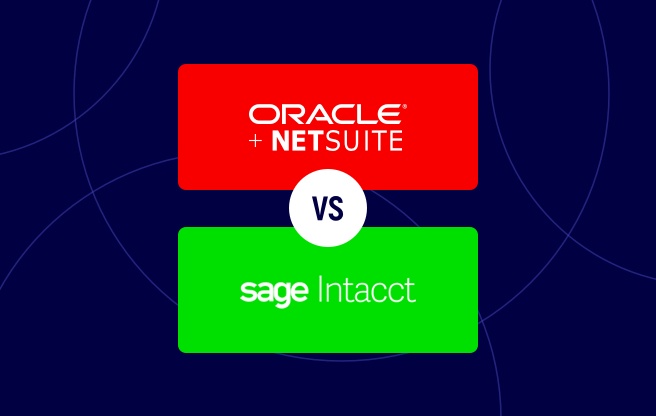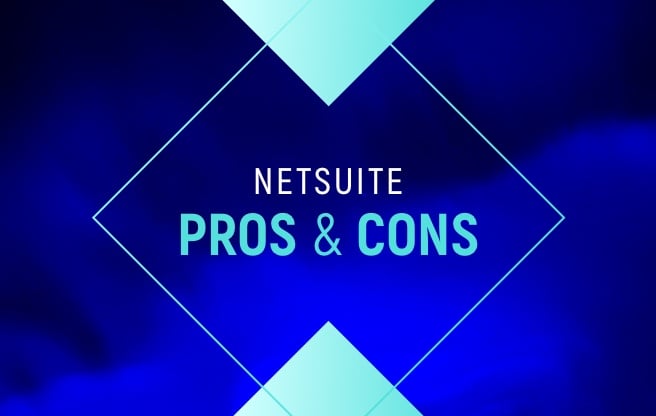In this blog post, we will be comparing and contrasting two of the top enterprise resource planning (ERP) software solutions: NetSuite and Sage x3. Our goal is to provide a comprehensive overview of the features, capabilities, and potential drawbacks of each platform, so that you can make an informed decision about which one is the best fit for your business. Whether you are a small startup looking to streamline your operations or a large corporation seeking to integrate all your systems and processes, we hope this comparison will be helpful in finding the right ERP solution for your needs.
When evaluating leading ERP vendors like Sage and Oracle there's a handful of potential ERP products one should consider.
Two of the most common ERP applications companies compare are recently acquired Intacct and Oracle's NetSuite, which you can read about here: NetSuite vs Intacct.
You could also compare NetSuite vs Sage Live (now known as Sage Business Cloud Financials), Sage 50, Sage 100, or Sage 300, however, this post will focus squarely on Sage x3 (recently rebranded as Enterprise Management) vs NetSuite.
Keep reading to learn more about how Sage x3 compares to the #1 cloud-based ERP, NetSuite.
Be sure to bookmark this page as a resource during your ERP evaluation and if you want to talk to a NetSuite expert, lets chat.
Table of Contents
- Sage x3 vs NetSuite Overview
- Sage x3 vs NetSuite Company Profiles
- Sage x3 vs NetSuite Features
- Sage x3 vs NetSuite Pricing
- Sage x3 vs NetSuite Reviews
- Sage x3 vs NetSuite Support
- Conclusion
Sage x3 vs NetSuite Overview:
Both Sage x3 and NetSuite offer cloud-based ERP software designed to help mid-market companies run their businesses better.
How are they different...
The key differences between NetSuite and Sage x3 center around deployment options, vertical capabilities and architecture.
Sage x3 has historically been seen as a strong contender for manufacturers, especially liquid manufacturers as it is able to serve the needs of international customers with multi-company and currency capabilities. Sage X3's biggest challenges however, stem from its legacy technology origins - this ends up pushing additional cost and complexity on to its customers. For instance:
- X3 does not offer native eCommerce or Customer Relationship Management (CRM) capabilities which requires a separate software product and integration.
- Customers cite poor native reporting features and require the use of OEM add-ons.
- Customers cite customizations are very difficult and break between upgrades
- Upgrades are expensive and difficult leaving many customers on an older version of the software
NetSuite on the other hand offers a cloud-based business suite encompassing ERP, CRM and eCommerce and an underlying platform enabling ease of integration, customization and 3rd party (certified) add-ons. This combined with predictable upgrade schedules (twice a year) ensures customers are able to leverage all past investments in the future and remove the worry of having to replatform at a future date.
To identify whether Sage x3 (EM) or NetSuite is best for your business we've produced this a side-by-side comparison guide below:
Sage x3 vs NetSuite: Product Profiles

Sage acquired Adonix X3 in 2003. Retooled for the cloud and rebranded under the EM name in 2017. Available as a subscription via Amazon Web Services (managed by Sage) or as a on-premise solution.

NetSuite ERP is a complete cloud ERP solution, which automates front and back-office processes like financial management, revenue management, fixed assets, order management, billing, and inventory management and more.
3 (cloud version)
20
~40 (cloud version)
~50,000
- Process Manufacturing
- Distribution
- Professional Services
- Retail
- Ecommerce
- Financials Services
- Advertising
- Media & Publishing
- Healthcare
- Life Sciences
- Energy
- Education
- Transportation & Logistics
- Nonprofits
- Social Venture
- Services
- Software and SaaS
- Manufacturing
- Wholesale Distribution
Sage x3 vs NetSuite: Feature Comparison

- Accounts Payable
- Accounts Receivable
- General Ledger
- Multi-Company & Consolidation
- Fixed Assets
- Cash Flow Management
- Forecasting & Budgeting
- Construction Management

- Accounts Payable
- Accounts Receivable
- General Ledger
- Multi-currency/multi-tax,multi-language
- Fixed Assets
- Multi-Company & Consolidation
- Revenue Recognition
- Subscription Billing
- Forecasting & Budgeting
- Financial Planning (PBCS)

- Order Management
- Production Management
- Inventory Management
- Procurement
- Warehouse & Fulfilment
- Demand Planning
- WIP & Routing
- Work Orders & Assemblies
- Shop Floor Control & BOM Maintenance
- Formula Management

- Order Management
- Production Management
- Inventory Management
- Procurement
- Warehouse & Fulfilment
- Demand Planning
- WIP & Routing
- Work Orders & Assemblies
- Shop Floor Control & BOM Maintenance

- Human Resources Management
- Payroll

- Human Resources Management
- Payroll
- Employee Center

- Point of Sale
- Ecommerce
- Order & Inventory Mgt
- Product Content Mgt
- Commerce Marketing Automation (Bronto)

- Project Management
- Resource Management
- Timesheet Management
- Expense Management

- Project Management
- Resource Management
- Timesheet Management
- Expense Management


Sage x3 vs NetSuite Pricing:
- Around $26,000 per year for 10 users.

- Base application starts at $999 per month.
- User Licenses $99 per user per month
Perpetual or Subscription
NetSuite requires a year-long contract; renewed annually.
Additional fees apply for professional services such as implementation, integration, customizations, data migration and support.
Additional fees apply for professional services such as implementation, integration, customizations, data migration and support.
Annual recurring fees for the software subscription
Annual recurring fees for the software subscription.
Direct or through Partner
Direct or through Partner
Sage x3 vs NetSuite Reviews:

- 4.5 Stars 15 Reviews

- 4 Stars 91 Reviews
- NA
Leader for Cloud Core Financial Management Suites for Midsize, Large and Global Enterprises - Download Report
Sage x3 vs NetSuite Support:

24/7 toll-free worldwide phone support available

24/7 toll-free worldwide phone support available
Live and/or online training available by Sage training department and by partners.
Live and/or online training available by NetSuite training department and by partners.
Sage has extensive knowledge base available to all users as well as online user groups.
NetSuite has extensive knowledge base (SuiteAnswers) available to all users as well as online user group.
None exist at this time
Dozens of local user groups across the United States.
Final Thoughts...
Sage x3, formerly known as Enterprise Management, may be a suitable ERP option for global liquids manufacturers who need various deployment options. However, growth for X3 has been slow, and it has not been identified as a leader or contender in the cloud-based ERP software market by analysts. Additionally, Sage has acquired multiple cloud and on-premises accounting and ERP solutions over the years, and it is uncertain which application will receive future attention and investment. One possibility is that the recent acquisition of Intacct may indicate where Sage's focus is shifting.
On the other hand, NetSuite has consistently been a leading player in the ERP market, with a high rate of client acquisition, positive analyst reviews, and a wide range of mature products. It is widely regarded as one of the most comprehensive and complete cloud-based ERP offerings available.
Still not sure about what solution makes most sense? Let's talk!
Get Started Now
The easiest way to get started is to contact Techfino today. If you’d like a little more information first, you can download our ContinuedSuccess Whitepaper. Either way, we hope you’ve found this guide helpful and hope that we can further assist you on your path to leveling up your NetSuite Support.






